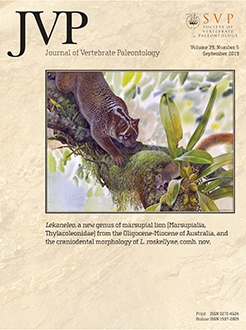The Hemingfordian North American Land Mammal Age is a poorly known time period, although recently discovered sites in central Oregon have begun to cast light on a diverse mammalian fauna. Here, we describe four small carnivorans new to this region, one of which is a new species. Cryptailurus tinaynakti, sp. nov., is a hypercarnivorous feliform. UOMNH F-70218 is the dp4 of a diminutive mustelid similar in morphology to that of extant martens, but likely of a new species based upon discussed patterns in mustelid deciduous dentition. The occurrence of two additional species, Leptocyon leidyi and Bassariscus antiquus, increases both their geographic and temporal ranges. The early to middle Miocene was a time of transition from sparse woodland to grassland ecosystems in much of North America. The Hemingfordian fauna of the Pacific Northwest inhabited a diverse wet woodland ecosystem, surprisingly rich in carnivorans. With the description of these additional small taxa, we can now get a clearer picture of what must have been a diverse assemblage of mammals with a variety of ecological roles in an undersampled period of time.
How to translate text using browser tools
14 April 2020
Small Carnivoran Fauna of the Mascall Formation, Crooked River Basin, Central Oregon
Paul Z. Barrett,
Leonard Finkelman,
Genevieve Perdue,
Win N. F. Mclaughlin,
Dana M. Reuter,
Samantha S. B. Hopkins
ACCESS THE FULL ARTICLE





